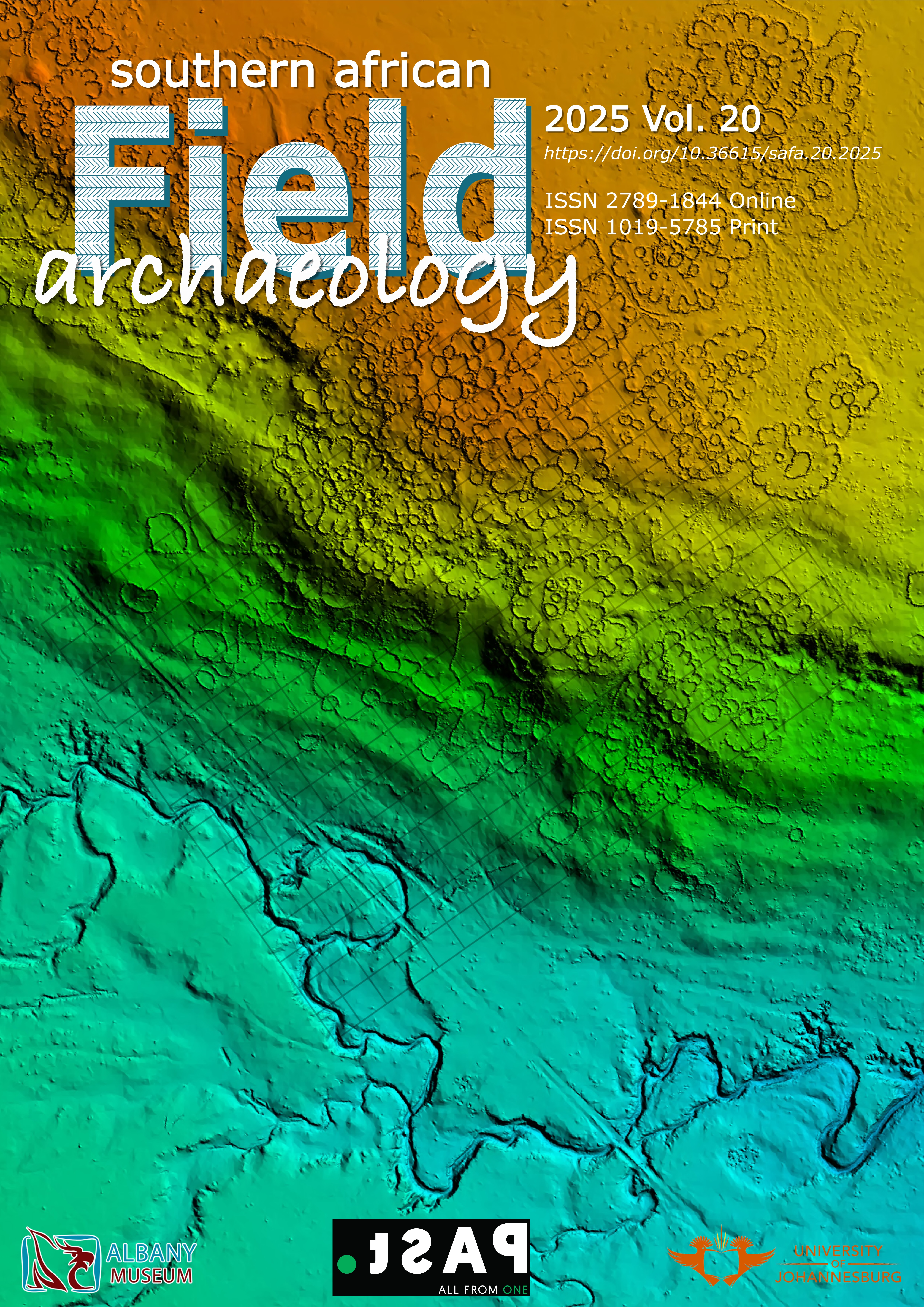The stratigraphic context, chronology, and cultural sequence at Little Muck Shelter, southern Africa
Main Article Content
Keywords
Later Stone Age, Forager archaeology, Radiocarbon dating, Stratigraphy, middle Limpopo Valley
Abstract
Hall and Smith’s (2000) excavations at Little Muck Shelter in the late 1990s uncovered a Later Stone Age sequence purported to span the last 2000 years. They identified four occupation phases that included what they called workshop phases when resident foragers were crafting vast amounts of goods for the purpose of trade with nearby farmers. In return, foragers obtained domestic items, ceramics, metal and glass beads. Despite the site’s distinct occupation horizons, and the potential it offered for understanding forager-farmer relations in the middle Limpopo Valley, no radiocarbon dates were obtained, and its cultural assemblage was not studied in great detail. To address this, a new excavation programme was designed to obtain radiocarbon results for the site’s entire occupation and better understand the stratigraphic and cultural sequence inside and outside the shelter. A large suite of radiocarbon dates from two laboratories are stratigraphically inconsistent, contradictory, do not conform with the regionally established cultural chronology, and must be rejected. To circumnavigate this, here we present a detailed chronological sequence for Little Muck based on changes in the cultural material assemblage. We compare this to the previous excavation results and assess stratigraphic relationships across the shelter. Our results make it possible to associate specific changes at the site with forager-farmer interactions in the middle Limpopo Valley, and demonstrate the continued occupation of the shelter into the thirteenth century CE Mapungubwe phase.






